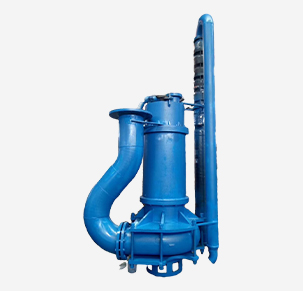Uzbek
- Afrikaans
- Albanian
- Amharic
- Arabic
- Armenian
- Azerbaijani
- Basque
- Belarusian
- Bengali
- Bosnian
- Bulgarian
- Catalan
- Cebuano
- Corsican
- Croatian
- Czech
- Danish
- Dutch
- English
- Esperanto
- Estonian
- Finnish
- French
- Frisian
- Galician
- Georgian
- German
- Greek
- Gujarati
- Haitian Creole
- hausa
- hawaiian
- Hebrew
- Hindi
- Miao
- Hungarian
- Icelandic
- igbo
- Indonesian
- irish
- Italian
- Japanese
- Javanese
- Kannada
- kazakh
- Khmer
- Rwandese
- Korean
- Kurdish
- Kyrgyz
- Lao
- Latin
- Latvian
- Lithuanian
- Luxembourgish
- Macedonian
- Malgashi
- Malay
- Malayalam
- Maltese
- Maori
- Marathi
- Mongolian
- Myanmar
- Nepali
- Norwegian
- Norwegian
- Occitan
- Pashto
- Persian
- Polish
- Portuguese
- Punjabi
- Romanian
- Russian
- Samoan
- Scottish Gaelic
- Serbian
- Sesotho
- Shona
- Sindhi
- Sinhala
- Slovak
- Slovenian
- Somali
- Spanish
- Sundanese
- Swahili
- Swedish
- Tagalog
- Tajik
- Tamil
- Tatar
- Telugu
- Thai
- Turkish
- Turkmen
- Ukrainian
- Urdu
- Uighur
- Uzbek
- Vietnamese
- Welsh
- Bantu
- Yiddish
- Yoruba
- Zulu
Telephone: +86 13120555503
Email: frank@cypump.com
Noy . 29, 2024 11:35 Back to list
Submersible Pumps for Efficient Wastewater Management and Treatment Solutions
Submersible Wastewater Pumps An Essential Tool for Modern Waste Management
Submersible wastewater pumps are vital components in the realm of sewage and wastewater management. Designed to function while submerged in liquids, these pumps are engineered to efficiently move wastewater from lower levels to treatment facilities or higher ground. Their importance is increasingly recognized in urban planning, industrial applications, and residential setups, ensuring that waste is managed effectively and safely.
How Submersible Wastewater Pumps Work
Submersible wastewater pumps are equipped with a hermetically sealed motor which prevents water from entering the motor housing. The pump’s impeller is located at the bottom, designed to create a flow of water that lifts the wastewater through a discharge pipe. The design allows these pumps to handle solid materials and debris, making them especially suited for environments where traditional pumps may struggle.
Most submersible pumps are made from corrosion-resistant materials like stainless steel or thermoplastic, making them durable and effective in various challenging environments. They come in various sizes and capacities, allowing them to be utilized in both domestic and industrial applications, from draining basements to pumping sewage from municipal systems.
Advantages of Submersible Wastewater Pumps
One of the significant advantages of submersible wastewater pumps is their efficiency. By operating underwater, they eliminate the need for a suction lift, allowing for easier and more efficient movement of water. This capability not only conserves energy but also reduces the risk of cavitation, a phenomenon that can damage pumps when air enters the system.
submersible wastewater pump

Moreover, these pumps are relatively easy to install and maintain. Submersible pumps can be positioned directly in the wastewater they are intended to manage, minimizing the need for extensive piping and infrastructure. Maintenance typically involves periodic inspections, and many models can be serviced without removal from the liquid environment, which saves time and labor costs.
Applications in Various Settings
Submersible wastewater pumps are used in a wide range of applications. Residential settings frequently utilize them for sump pumps to prevent flooding in basements or crawl spaces. In commercial buildings, these pumps are crucial for managing sewage systems and waste disposal after heavy rainstorms or rapid snowmelt.
Industrially, submersible wastewater pumps play a crucial role in manufacturing facilities, where they handle industrial wastewater. Additionally, construction sites often employ these pumps to dewater excavations, ensuring that work can progress without interruption. In municipal settings, they are essential for sewage treatment plants, helping transport wastewater to treatment facilities efficiently.
The Future of Submersible Wastewater Pumps
As population growth and urbanization increase, so too does the demand for effective wastewater management solutions. Innovations in pump technology will likely focus on enhancing energy efficiency, reducing noise levels, and incorporating smart technology. Future models might integrate IoT capabilities for real-time monitoring of performance and maintenance needs, thus optimizing their operation.
In conclusion, submersible wastewater pumps are an indispensable asset in managing wastewater across various sectors. Their ability to handle diverse tasks efficiently while remaining submerged makes them unique and effective tools for waste management. As technology continues to evolve, these pumps will play a critical role in ensuring a cleaner and more sustainable environment.
-
ISG Series Pipeline Pump - Chi Yuan Pumps | Energy Efficiency&Compact Design
NewsAug.03,2025
-
ISG Series Vertical Pipeline Pump - Chi Yuan Pumps Co., LTD.|High Efficiency, Low Noise, Durable
NewsAug.02,2025
-
ISG Series Vertical Pipeline Pump - Chi Yuan Pumps | High Efficiency, Low Noise
NewsAug.02,2025
-
ISG Series Vertical Pipeline Pump- Chi Yuan Pumps Co., LTD.|High Efficiency&Compact Design
NewsAug.02,2025
-
Heavy-Duty Mining Sludge Pumps - Wear-Resistant Slurry Handling
NewsAug.02,2025
-
Horizontal Split Case Pump with GPT-4 Turbo | High Efficiency
NewsAug.01,2025










